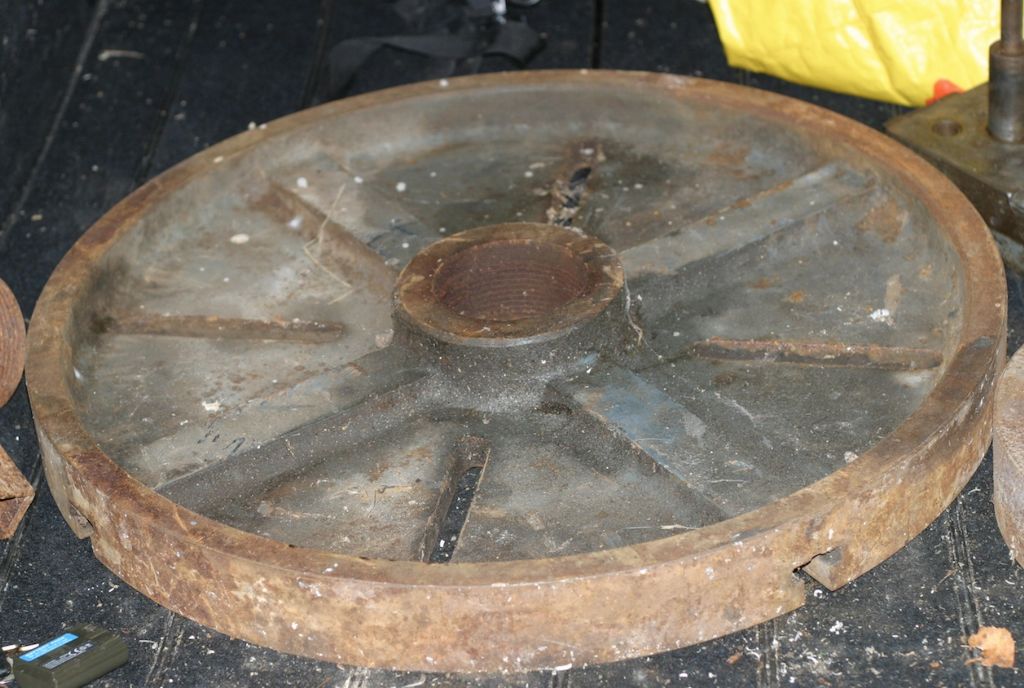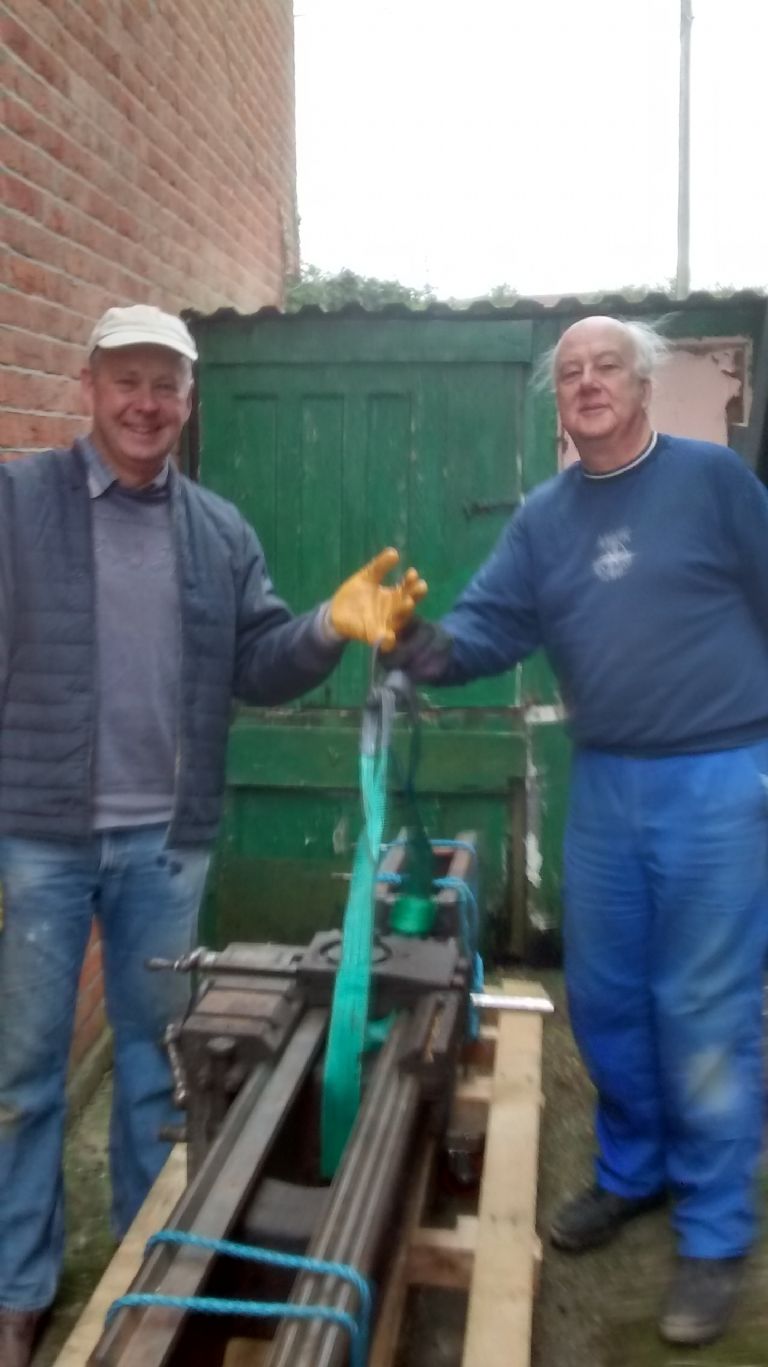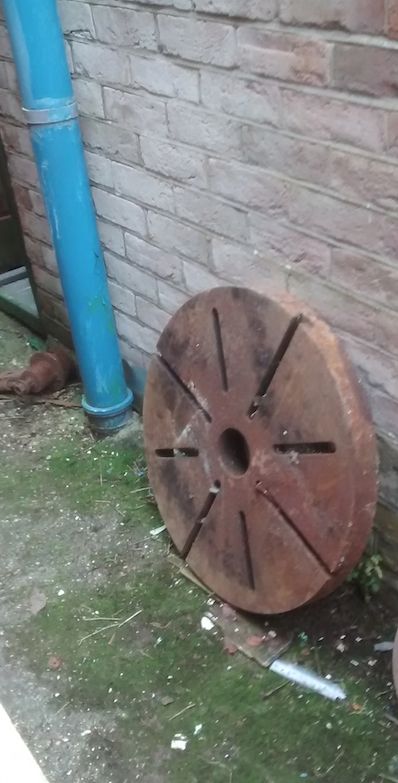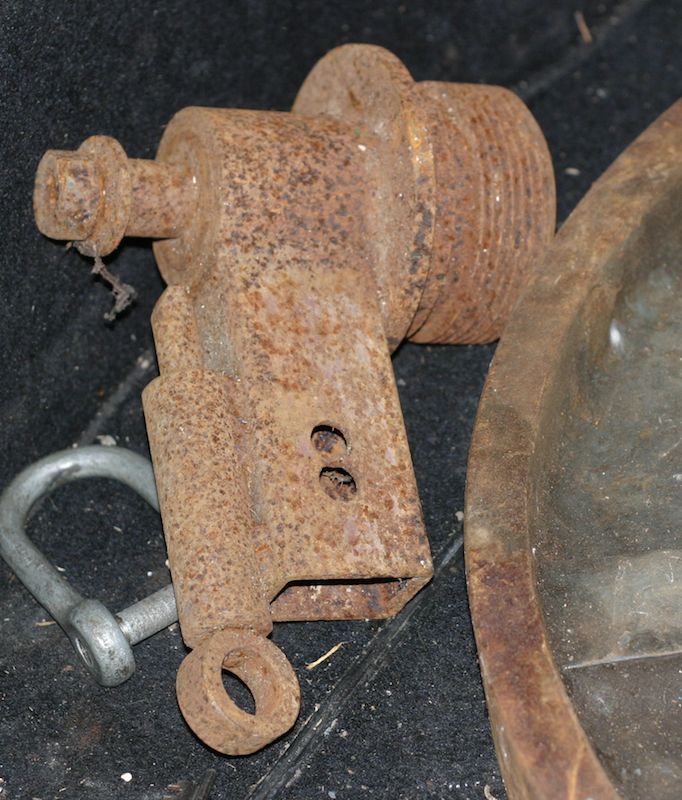Hi Chris, To strip and rebuild the EE motor, proceed as follows:
Clean up the pulley and shaft at the drive end, and remove the key, with a lever if it has a tang on it, with a pair of molegrips if it hasn't or the tang is broken. This may involve warming the pulley with a blowlamp and tapping the pulley a little further on to the shaft to free the key. Believe it or not they usually come out quite easily. Once the key is out, clean the end of the shaft to bright metal, remove any burs, and remove the pulley. Behind the pulley, and at the other end in th same place you will see the three screws or bolts visible in your pic that locate the bearing covers. These usually go right through the motor end plate casting and screw into a bearing retainer plate inside the motor. Remove these screws at both ends. Clean the outside of the motor and, at the drive end, put a single centre punch mark adjacent to one of the through bolts (The ones that go right through the motor and hold the end caps onto the stator) on the end cap, and a matching mark on the stator. Now go to the non drive end and put two punch marks adjacent to a through bolt, and two on the stator. These marks are for reassembly to make sure it goes back together in the same orientation it was originally assembled in. If you look carefully, these marks may already be there if the motor has been stripped previously. When you have done this, remove the four through bolts, and you should be able to use a hide faced or copper/lead mallet to split the motor by gently tapping the end cap flanges with a brass drift, or the soft hammer if you have one. I used to use compressed air (and a mask!) to clean out the dust, but someone pointed out that a vacum cleaner is better, and I can't argue with that as long as all the dust and debris is carefully removed from the windings. It can then be washed out with water free alcohol (anhydrous alcohol) and set aside somwhere warm to dry.Wash the end caps and other components in parrafin or engine cleaner (or diesel or central heating oil), and carefully wash out the bearings, bearing housings and grease holes with parrafin and examine the bearings for any signs of pitting, corrosion or rough running when you spin them. By the way, If the bearings stay on the rotor shaft, there is no need to remove them unless you need to replace them, All this can be done with them in place, we used to take them off most of the time, but we had the equipment! If there are cooling holes through the rotor, clean these out thoroughly when you clean the rotor.
Examine the stator windings, and the tails that go from the windings to the connector block where the cable attaches to the motor. If the insulation on these is cracked or "sticky" they can be sleeved with glass fibre sleeving, or replaced with new cables, which are soldered to the ends of the coil windings. If you remove the tails from the connector block be sure to mark them up so you can put them back in the same place. Now is the time to get the stator megger tested to confirm that the windings insulation is still good. Once this is confirmed, and all the parts are cleaned, you can begin reassembly. If it fails the megger test, send the whole motor for a rewind, not just the stator, as this will enable the rewinders to rebuild and test the motor (thus saving you the following
Firstly, with clean hands, repack the bearings with HMP (high melting point) grease used for car wheelbearings and available at you nearest halfords or probably much cheaper from and independant car store! There are two ways to proceed, and TBH I have used both, and it makes very little difference. Some people prefer to put the rotor back into the stator first, then fit the end caps (I usually do it this way, especially with really big motors) others will fit the rotor to the drive end end cap (the one with the single punch marks) then fit the bearing retainer screws, and fit the assembly to the stator. Line up the punch marks and then align the bearing retainet plate with the screw holes in the rear end cap and fit it to the stator, lining up the punch marks again. Loosly fit the through bolts, then put one of the bearing retainer bolts through the holes in the end cap (without fitting the outer plate, and see if you can pick up the thread in the bearing retainer plate You can isert a peice of bent wire through the vent slots to hold the plate against the end cap, and check for alignment with a long thin screwdriver (this process is usually much easier than it sounds here!)once you have one bolt started, put another bolt through the outer plate, and fit that to one of the other bolt holes, then remove the first bolt, and swing the plate into place. Once all the bolts are in loose, tap the endcaps a bit further onto the stator making sure they are going on square, and toghten the through bolts alternately and diagonally, checkin the rotation as you do so. tighten the bearing retainer bolts and refit the pulley loosely. do the final alignment when the motor is back on the lathe.
I then used to pass them over to Mick, who used to spend the last hour of the day testing them and spraying them in "Jeffersons" Blue. Motors from 1 to 10 HP we used to do four a (good) day, but that was in a fully equipped (well, they said it was!) workshop. Good luck!
Phil
Doug Goding.















